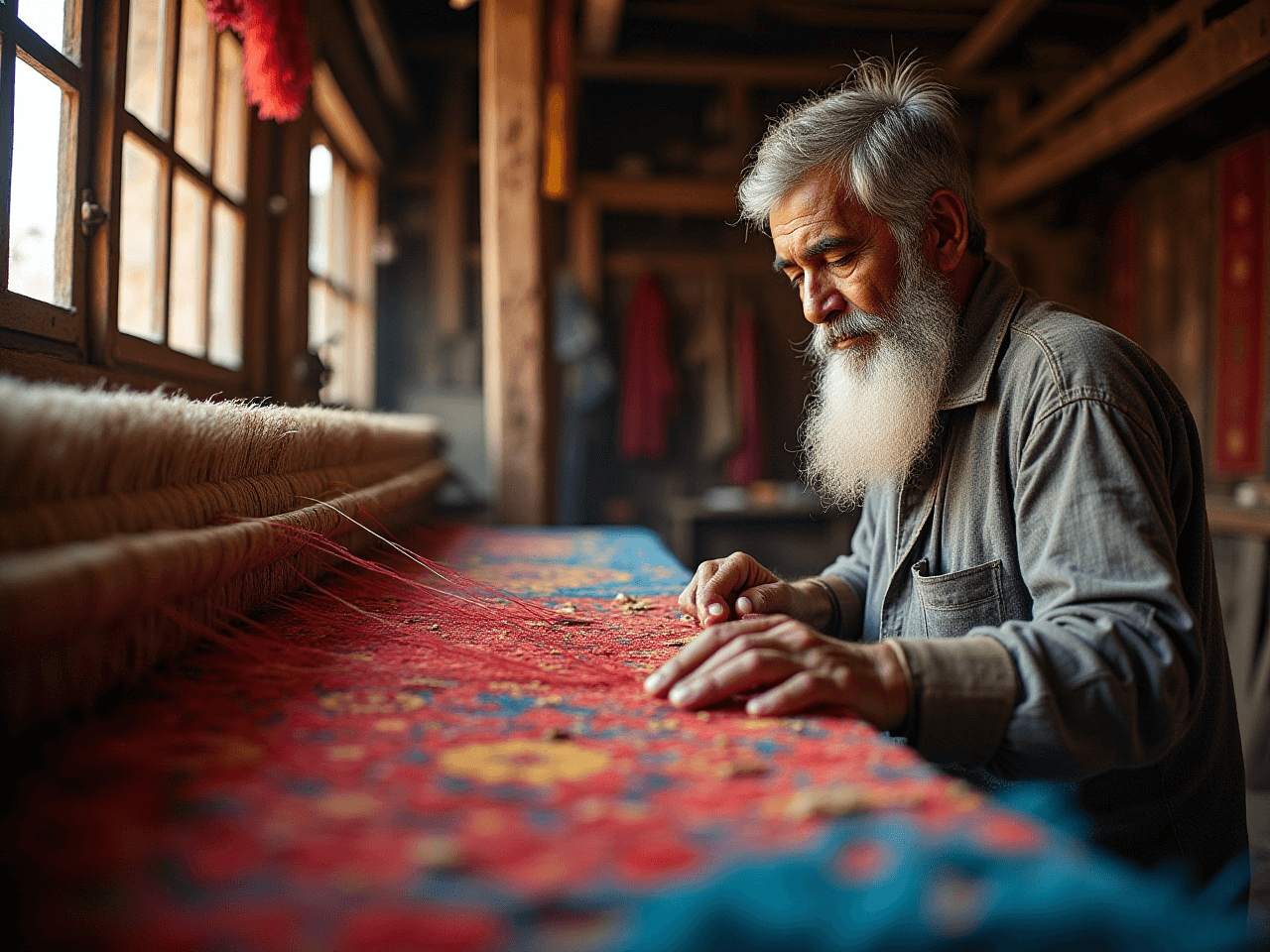Unraveling the Carpet Capital of India
Carpets have always been more than just floor coverings in India. They are pieces of art steeped in culture, tradition, and exceptional craftsmanship. India’s legacy in carpet weaving dates back to the Mughal era, when the art form was elevated to extraordinary heights. Today, Indian carpets are celebrated worldwide for their quality, creativity, and diversity, making the country one of the top exporters of handmade rugs.
When we talk about carpets in India, one city stands out above the rest as a shining beacon of this time-honored craft. Often referred to as the “Carpet City of India,” Bhadohi has earned global recognition for its unparalleled contributions to the world of handmade rugs.
In this post, we’ll explore Bhadohi’s prominence in the industry, its rich heritage, and what makes it truly special. We’ll also take a closer look at other notable carpet hubs across the country and how you can find and purchase authentic Indian carpets.
The Carpet City of India Bhadohi
Why Bhadohi Deserves the Title
Situated in Uttar Pradesh, Bhadohi has become synonymous with exquisite handmade carpets. Known as the “Carpet City of India,” this unassuming town boasts the largest hand-knotted carpet weaving industry in South Asia. Bhadohi’s artisans have mastered the craft over generations, creating rugs that are as beautiful as they are durable.
A Legacy Rooted in History
Bhadohi’s carpet history dates back several centuries, with records suggesting that the industry was established during the Mughal period. The town’s expertise evolved over time, deeply rooted in techniques passed down through families.
What Bhadohi Carpets are Known For
Bhadohi specializes in a variety of carpets, each with its own unique appeal:
- Hand-knotted Carpets: Celebrated for their intricate designs and unmatched durability, hand-knotted carpets are a masterpiece of craftsmanship.
- Hand-tufted Rugs: These are faster to produce but still retain a high degree of quality and artistry.
- Flat-Weave Rugs: Lightweight and versatile, these are sustainable options that fit modern minimalistic styles.
A Pillar of India’s Carpet Economy
Bhadohi doesn’t just produce carpets; it drives India’s prominence in the global carpet industry. An estimated 75% of India’s carpet exports come from Bhadohi and its surrounding areas, providing livelihood to tens of thousands of skilled artisans.
Other Prominent Carpet Weaving Cities in India
While Bhadohi takes center stage, several other Indian cities have their own unique carpet weaving traditions and specialties.
Srinagar, Kashmir
The world-renowned Kashmiri silk carpets are a true luxury. With intricate floral designs and exceptional softness, they reflect the region’s Persian influences and artistic heritage.
Jaipur, Rajasthan
Known for its Mughal-inspired motifs and craftsmanship, Jaipur creates stunning wool and cotton rugs. Its vibrant color palette brings warmth and character to any space.
Mirzapur, Uttar Pradesh
Often overshadowed by Bhadohi, Mirzapur produces affordable hand-tufted carpets, making elegant designs accessible to a wider audience.
Agra, Uttar Pradesh
The city that gave us the Taj Mahal also brings the world Mughal-style carpets. These rugs are a nod to the aesthetic sensibilities of the Mughal era, blending rich patterns with Persian elements.
What Makes Bhadohi Stand Out
Wondering what sets Bhadohi apart from other cities? Here are some reasons why Bhadohi continues to hold its title as the Carpet Capital of India.
Skilled Artisan Communities
Bhadohi is home to generations of artisans who have refined their techniques over decades. Their craftsmanship, attention to detail, and ability to translate ideas into woven art are unmatched.
Unique Techniques and Natural Dyes
Bhadohi artisans employ hand-knotting and hand-tufting techniques that require immense skill and precision. Additionally, the use of natural dyes not only enhances the richness of the carpets but also makes them eco-friendly.
Recognition and GI Tag
Bhadohi’s carpets carry the prestigious Geographical Indication (GI) tag, a certification that ensures authenticity and protects traditional crafts. This recognition strengthens both the local artisans’ livelihoods and the town’s international reputation.
How to Buy Authentic Indian Carpets
Looking to own a piece of India’s carpet heritage? Here’s how to make sure you’re buying the real deal.
Spotting Genuine Handmade Carpets
- Look for irregularities in the weave, a hallmark of handmade goods.
- Pay attention to the edges; machine-made carpets often have perfect, overly polished edges.
- Test for durability. A high-quality handmade carpet will be dense and resilient.
Trusted Marketplaces
- Visit government emporiums like Central Cottage Industries Emporium for authentic pieces.
- Check out artisan fairs such as Delhi Haat for handmade and certified carpets.
- Explore online platforms featuring certified sellers and GI-tagged products.
Certifications Count
Always look for certifications like the Handloom Mark or the GI tag to ensure authenticity and fair trade practices.
Explore the Legacy of Indian Carpets
When you think of a richly woven Indian carpet, you’re not just thinking about a floor covering. You’re envisioning generations of artisans, centuries of heritage, and an enduring commitment to perfection.
Bhadohi leads the way as the heart of India’s carpet industry, yet the collective effort of cities like Srinagar, Jaipur, Mirzapur, and Agra adds layers of depth to this incredible tradition.
Why not explore India’s storied carpet heritage by bringing some of that craftsmanship into your own home? Whether you’re drawn to a hand-knotted masterpiece from Bhadohi or a silk marvel from Kashmir, every Indian carpet tells a story.
Start exploring artisan carpets today and be part of their legacy.





